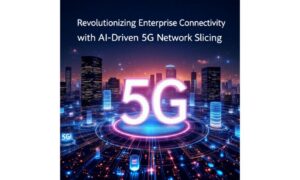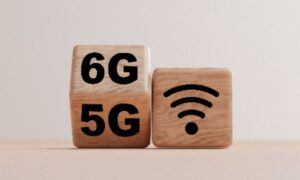In the fast-paced world of technology, the evolution from 4G to 5G is nothing short of revolutionary. As we transition from smartphones to smart cities, 5G technology emerges as the linchpin, driving connectivity, innovation, and efficiency to unprecedented levels. This blog post delves into the crucial role that 5G technology plays in transforming not just individual devices, but entire urban landscapes into smart, interconnected hubs of the future.
The Foundation of 5G Technology
Before we explore its impact on smart cities, it’s essential to understand the foundation of 5G technology. The “5G” stands for the fifth generation of wireless communication technology, succeeding the widely adopted 4G/LTE networks. What sets 5G apart is its ability to provide faster speeds, lower latency, and increased capacity, making it a game-changer for various industries and applications.
Enhanced Mobile Broadband
One of the most immediate and noticeable impacts of 5G is the significant improvement in mobile broadband. Smartphones equipped with 5G capabilities can experience download speeds that are several times faster than 4G, enabling users to stream high-definition content, engage in video calls, and download large files in the blink of an eye. This enhanced mobile broadband experience lays the groundwork for more seamless and immersive interactions with our devices.
Internet of Things (IoT) Revolution
The true magic of 5G unfolds when we consider its role in the Internet of Things (IoT). With its low latency and high capacity, 5G becomes the backbone for connecting a myriad of devices and sensors that make up the IoT ecosystem. From smart home appliances to wearable devices and industrial sensors, 5G enables real-time communication between devices, paving the way for unprecedented levels of automation and efficiency.
Smart Cities Redefined
The concept of smart cities is undergoing a profound transformation, and at the heart of this evolution lies the revolutionary influence of 5G technology. As we delve deeper into how 5G is redefining smart cities, it becomes evident that this transformative force is not just about connectivity; it’s about reshaping the very fabric of urban living. Let’s explore in detail how 5G is catalyzing a paradigm shift in the way we conceive, plan, and experience cities.
- Connected Infrastructure
The backbone of any smart city is its interconnected infrastructure, and 5G serves as the nervous system that binds it all together. Traditional urban components such as traffic lights, surveillance cameras, and public transportation systems are no longer standalone entities. With the advent of 5G, these elements seamlessly communicate with each other in real-time, forming an intelligent network that adapts to the dynamic needs of the city. This connectivity not only optimizes traffic flow but also enhances public safety through instantaneous responses to emergencies and incidents.
- Autonomous Vehicles
The vision of autonomous vehicles navigating our city streets is rapidly becoming a reality, thanks to the capabilities of 5G. Beyond the convenience of self-driving cars, 5G ensures that these vehicles can communicate with each other and with smart city infrastructure instantaneously. This real-time communication is a game-changer for traffic management, as it allows vehicles to coordinate movements, anticipate obstacles, and collectively contribute to a safer and more efficient transportation system.
- Healthcare Innovation
In the redefined landscape of smart cities, 5G plays a pivotal role in revolutionizing healthcare services. Remote patient monitoring, telemedicine, and virtual consultations become not just possibilities but integral components of urban health systems. The low latency of 5G ensures that critical medical data is transmitted in real-time, enabling healthcare professionals to make informed decisions promptly. This not only enhances the accessibility of healthcare services but also contributes to the overall well-being of citizens.
- Energy Management
Smart grids and energy management systems, critical for sustainable urban development, find a robust ally in 5G technology. The ability to monitor and control energy consumption in real-time allows for a level of precision that was previously unattainable. Smart cities can optimize energy distribution, identify inefficiencies, and respond dynamically to fluctuations in demand. This not only contributes to energy conservation but also aligns with the global push towards environmentally sustainable practices.
The immersive potential of AR and VR technologies is unleashed in smart cities powered by 5G. From urban planning simulations that allow city planners to visualize and optimize development projects to interactive experiences that engage citizens in novel ways, the possibilities are boundless. High-speed, low-latency connectivity ensures that AR and VR applications operate seamlessly, enhancing urban experiences and fostering a deeper connection between individuals and their environment.
- Environmental Monitoring
With the increasing focus on sustainability, smart cities leverage 5G to monitor and manage environmental factors. Sensors and IoT devices embedded throughout the city collect real-time data on air quality, pollution levels, and other environmental parameters. This data informs decision-making processes, enabling cities to proactively address environmental challenges and work towards a greener, more sustainable future.
- Public Services and Safety
5G facilitates the integration of smart technologies in public services, enhancing overall safety and efficiency. Emergency services can respond more swiftly with real-time information, and public safety measures can be dynamically adjusted based on evolving situations. From predictive policing to intelligent waste management, 5G empowers cities to provide better services and a safer living environment for their residents.
Challenges and Considerations of 5G Technology
While the promise of 5G in smart cities is exciting, it’s crucial to acknowledge and address the challenges associated with its implementation. Privacy concerns, cybersecurity risks, and the need for substantial infrastructure upgrades are just a few of the considerations that city planners, businesses, and policymakers must navigate to ensure the responsible and effective deployment of 5G technology.
Conclusion
The journey from smartphones to smart cities is undeniably intertwined with the evolution of 5G technology. As this fifth-generation wireless technology continues to mature and expand its reach, the possibilities for reshaping urban landscapes are limitless. From enhancing mobile experiences to revolutionizing how we interact with our environment, 5G is the catalyst for a new era of connectivity, innovation, and efficiency. As we navigate the complexities of integrating 5G into our cities, one thing is clear – the future is smarter, more connected, and powered by the transformative capabilities of 5G technology.



































